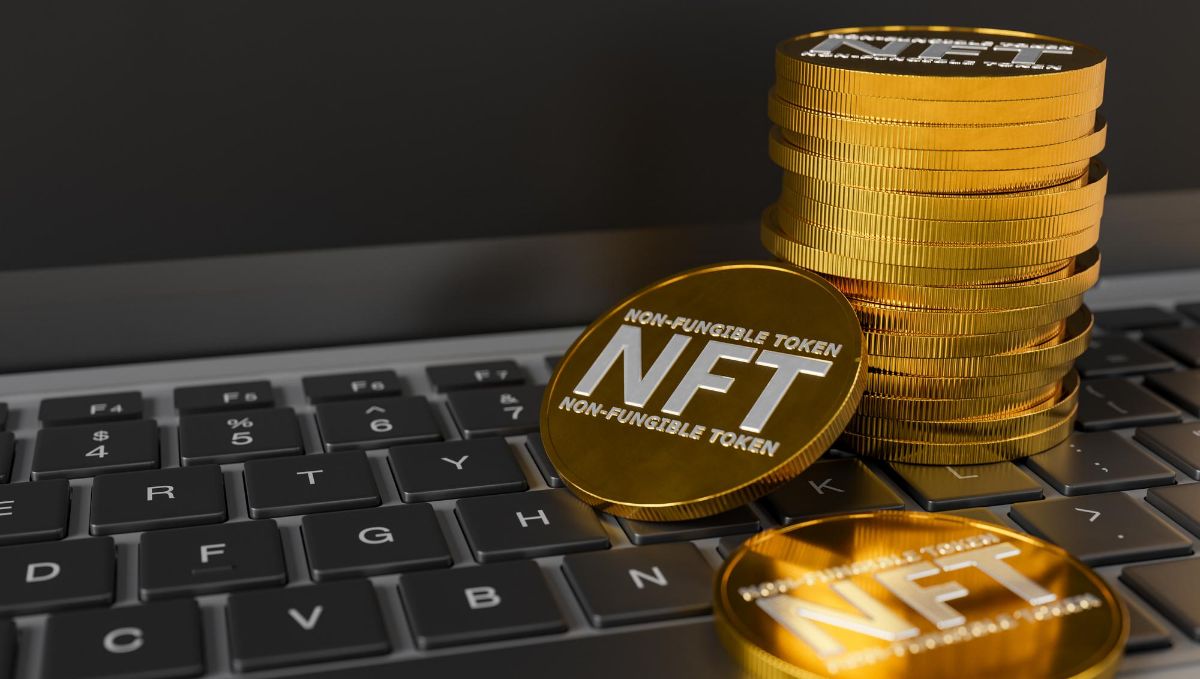The NFT landscape continues to witness a growing influx of artists, creators, and collectors. NFT staking is one of the latest innovations in this ever-evolving space, offering new ways to earn rewards and maximize the value of digital assets.
In this article, we will dive into the world of NFT staking, its benefits and risks, how to choose the right staking platform, and what the future holds for this exciting new development.
What is NFT Staking?
NFT staking is the process of locking up your non-fungible tokens on a blockchain platform to earn rewards, typically in the form of cryptocurrencies or other digital assets. By staking your NFTs, you can earn passive income while retaining ownership and control over your digital assets.
NFT staking works by utilizing the proof-of-stake (PoS) consensus mechanism, which requires users to lock up their digital assets to validate transactions and secure the network. In exchange for staking, users receive rewards that can include cryptocurrencies, platform tokens, or even other NFTs.
What are the benefits of NFT staking?
Passive income: NFT staking allows you to earn rewards without actively trading or selling your digital assets.
Enhanced value: By staking your NFTs, you can potentially increase their value and attractiveness to potential buyers.
Supporting the ecosystem: Staking helps secure the blockchain network and maintain its integrity, contributing to the overall health of the NFT ecosystem.
What are the risks of NFT staking?
Illiquidity: Staking requires locking up your NFTs, which can limit your ability to sell or trade them immediately.
Smart contract risks: Staking platforms rely on smart contracts, which can have vulnerabilities or bugs that could lead to the loss of your digital assets.
Market volatility: The value of rewards earned through staking can be subject to market fluctuations and may not always be predictable.
How to Choose the Right NFT Staking Platform
When choosing an NFT staking platform, consider the following factors:
Reputation: Research the platform’s history, team, and user reviews to ensure its credibility.
Supported assets: Ensure the platform supports the NFTs you wish to stake.
Reward structure: Evaluate the platform’s reward system to ensure it aligns with your financial goals.
Security: Assess the platform’s security measures and the potential risks associated with staking.

How to Stake an NFT
To stake an NFT, follow these steps:
- Choose a suitable NFT staking platform.
- Connect your digital wallet containing the NFTs you want to stake.
- Select the NFTs and the staking period, if applicable.
- Confirm the staking transaction and monitor your rewards.
Remember to factor in transaction fees, potential lock-up periods, and always conduct thorough research before staking your NFTs.
The Future of NFT Staking
NFT staking has the potential to transform how value is extracted from digital assets. Future developments are expected to include:
Cross-chain staking: Allowing NFTs from different blockchains to be staked on a single platform.
Fractional staking: Enabling users to stake fractions of NFTs, making it more accessible to a broader audience.
NFT staking pools: Combining multiple NFTs into a single pool to maximize rewards and minimize risks.
As NFT staking continues to evolve, its impact on the NFT market could attract more users and provide novel ways to monetize digital assets.
Conclusion
NFT staking presents an exciting opportunity for NFT holders to unlock additional value from their digital assets while contributing to the security and growth of the blockchain ecosystem.
However, it’s essential to carefully evaluate the risks, choose a reputable platform, and stay informed about the latest developments in this rapidly evolving space.
As you explore the world of NFT staking, always remember to do your research and proceed with caution, keeping the potential rewards and risks in mind.
Yes, there may be transaction fees when staking your NFTs on a platform. These fees vary depending on the platform and the blockchain network used.
No, not all platforms support all NFTs. Ensure that the platform you choose supports the NFTs you wish to stake.
Yes, you can stake multiple NFTs on a single platform, as long as the platform supports the NFTs you want to stake. However, keep in mind that staking multiple NFTs may increase the associated risks.
No, while your NFT is staked, it is locked up and cannot be sold or traded. Once the staking period ends, you can regain control over your NFT and trade it as desired.
To choose the right platform, consider factors such as reputation, supported assets, reward structure, and security measures. Research and compare various platforms before making a decision.
NFT staking works by utilizing the proof-of-stake (PoS) consensus mechanism, where users lock up their digital assets to validate transactions and secure the network, earning rewards in return.
The time it takes to start earning rewards from NFT staking depends on the platform and its staking model. Some platforms may have a minimum staking period, while others may distribute rewards more frequently.
While NFT staking has its risks, such as illiquidity and smart contract vulnerabilities, choosing a reputable platform and staying informed about potential risks can help mitigate these concerns.
Rewards for staking NFTs can include cryptocurrencies, platform tokens, or even other NFTs, depending on the platform and its reward structure.
NFT staking is the process of locking up non-fungible tokens (NFTs) on a blockchain platform to earn rewards, typically in the form of cryptocurrencies or other digital assets.
Credit: Source link
































